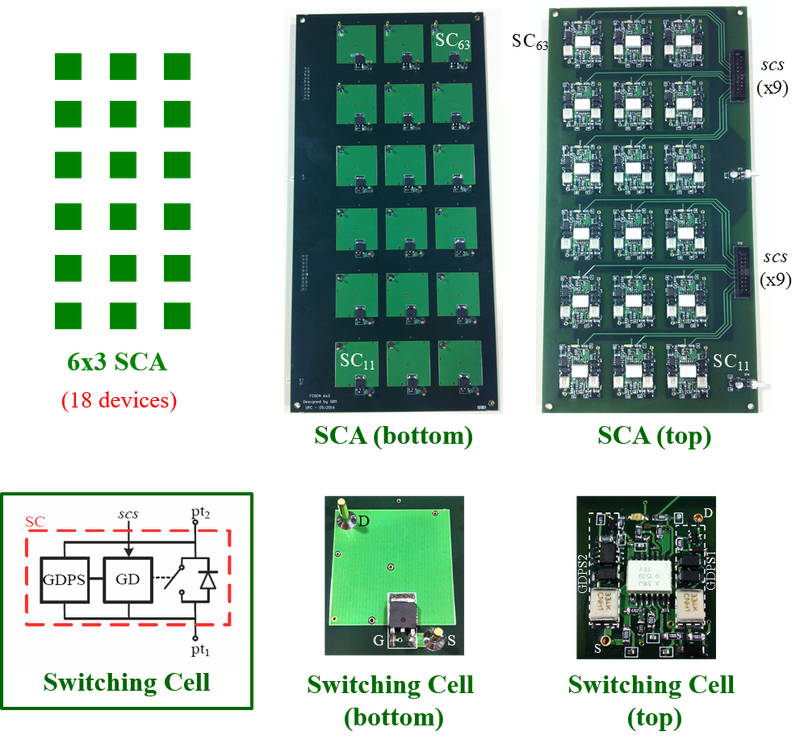SCATT
Switching Cell Array Technology Transfer
Power Electronics
Power electronics technology, which is responsible for processing and controlling the flow of electrical energy between two or more systems by means of electronic devices, has made a breakthrough in recent decades. It is an enabling technology in many fields (industrial, residential, transport, generation-transport-distribution of electrical energy, etc.) and is key for the use of renewable energy, the efficient use of energy, sustainable transport, and smart power grids.
Multilevel Converters
Traditionally, power electronic converters have been implemented with two-level technology, which means that there are only two levels of voltage on the DC-side. More recently, multilevel topologies, which allow synthesizing voltages from multiple levels of an elemental voltage, have been conceived. Figure 1 illustrates the multilevel concept. Multilevel technology offers advantages over the conventional two-level case: higher efficiency, lower harmonic distortion, fault tolerance, higher power density, lower electromagnetic noise, etc. GREP has been focusing its research on multilevel technology since 1996, being the pioneers of its study in Spain. In this long way, original contributions have been made regarding controls, modulations, and topologies.

Figure 1. Equivalent functional model of a 2-level and a multilevel leg.
MAC Topology
Figure 2 presents the UPC’s patented multilevel active clamped (MAC) topology, developed by GREP in 2011. Compared to conventional topologies, MAC topology offers multiple benefits. As it is a multilevel converter topology, it inherently incorporates all the advantages described in the previous paragraph. In addition, compared to multilevel topologies of the same family, it allows to reduce driving losses, better distribute switching losses and increase reliability.

Figure 2. MAC Leg
SCA Technology
More recently, GREP has devised a new innovative concept called Switching Cell Arrays (SCAs) (Figure 3), which is based on MAC topology and consists of a versatile and modular device that allows implementing any type of electronic power conversion (dc-dc, ac-ac, dc-ac and ac-dc).
From an array of n x m cells, it can be configured to obtain branches with different ratings of voltage and current (Figure 4). This versatility combined with the technical features of MAC topology gives SCA technology great potential to be used in many applications: electric vehicle traction inverter, battery chargers electric vehicles, motor drives, ac-ac converters in wind systems, inverters in photovoltaic systems, etc.

Figure 3. Switching Cell Array (SCA)

Figure 4. SCA concept
SCA Technology Applications

Figure 5. Motor-drive with batteries

Figure 6. Photovoltaic system
Aim of SCATT Project
The aim of this project is to intensify the transfer of knowledge of SCA technology, so that this technology reaches the degree of maturity needed to enter the market. As a milestone, GREP aims to consolidate and strengthen its current collaborations, as well as to establish new collaborations with new technological, academic and industrial partners, both nationally and internationally.

This project has been co-financed by the European Union through the European Regional Development Fund (FEDER).
Share: